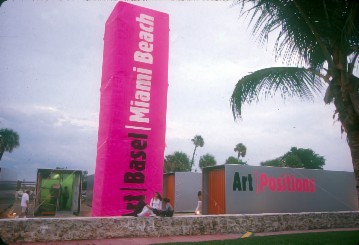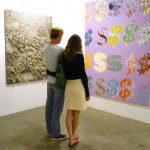The latest issue of FRIEZE magazine is dedicated to asking what has changed in art over the last 40 years. Responses inevitably vary from the rise of technology-based art to the supposed fall of minimalism, or that more money is thrown at young artists not even out of school, while some simply say nothing has changed. However, what was clear from all the responses was that art is happening all over the place and whatever “problem” one artist may be addressing; it is likely that same problem is being addressed in a dozen other places across the globe.
While artists look back to past models of conceptualism, institutional critique, the Situationists or the “immediacy of photography”, artists today look to capitalize on these efforts and make them more viable as commercial products. So it is without surprise that “Art Fair Art” as (Jack Bankowsky dubbed it) is the most popular form of art presentation today. From Tino Sehgal’s scripted performances to Rirkrit Tiravanija’s sealed gallery that prevented access to the rented booth, many are turning to the most commercial art event to find ways to distribute work once figured to be opposed to the existing art market. Although video has become an important “new” medium today, the reception and distribution of this medium has become traditional. Today’s videos are editioned like bronzes, producing a discipline once thought to be difficult to sell, a major collectible. More to the point: there seems to be no radical gesture that art cannot consume into its system of commerce, making the old adage “as things change the more they stay the same” ever more true. This is not to complain, mind you, or to propose some utopian art world where art exists “outside” the workings of commerce, but a way to look at how art criticism might be affected by such an international agenda of art fairs and biennials.
The expansion and ever-increasing international flavor of “today’s art” does present some significant differences. London based critic Mark Godfrey notes that when Donald Judd wrote “Specific Objects” some 40 years ago he need not venture far from his NYC doorstep. To find an expansive view of the discourse today, one needs to look not only at the Art Mall in Chelsea but the increasing number of art fairs and biennials across the world, not to mention the forever growing number of MFA programs. With so many outlets defining the practice, as a critic, one must realize one’s voice can only cover a small part of the picture. However, the important part is not to cover “the world”, but to address the regional themes found in the work made by constituents nearby, hoping they have currency in international waters.
Perhaps the art market is like any other industry. As mass production becomes more pervasive the same products get distributed in more locations. It is because of an international labor force that I can find the same bookshelves in Boston, Nebraska, Sweden or Mexico City. In E.F. Schumacher’s book “Small is Beautiful” he calls for permanence in the global economy, one that is not had with an international trade market, but virtually the opposite. He calls for scientists and technologists to develop methods and equipment that is cheap enough so virtually everyone has access, but more importantly, suitable for small-scale application. What this model means for artists is a more focused approach at satisfying and giving meaning to the community one is a part of, a regional one. However, this would also mean venues would need to provide the “methods and equipment” to cater to a particular locale. Not likely.
This is not to say that Biennials and art fairs are evil, or that the best “Art Fair Artists” don’t realize the precise limits of their practice. Only to say I found some comfort working for Big, Red and Shiny this week, a journal dedicated to a regional scene.
Links:
more on Tino Sehgal
- Photo courtesy Art Basel Miami Beach
- Photo courtesy Art Basel Miami Beach
- Photo courtesy Art Basel Miami Beach







